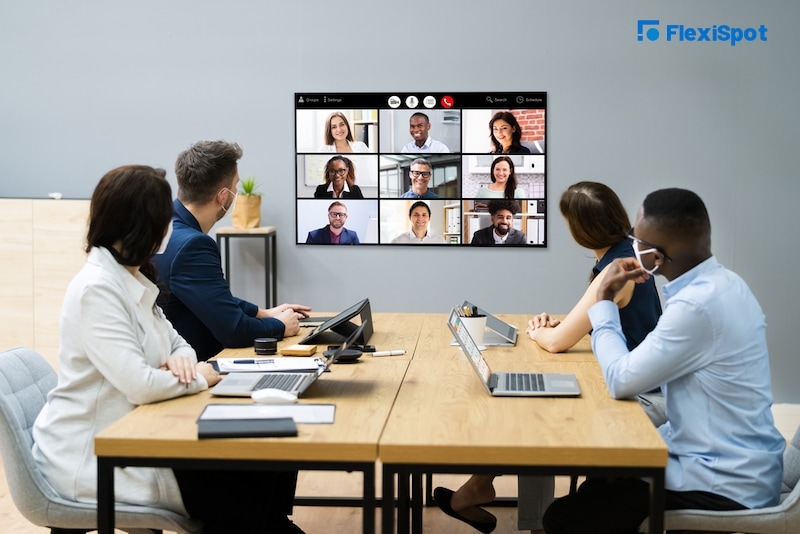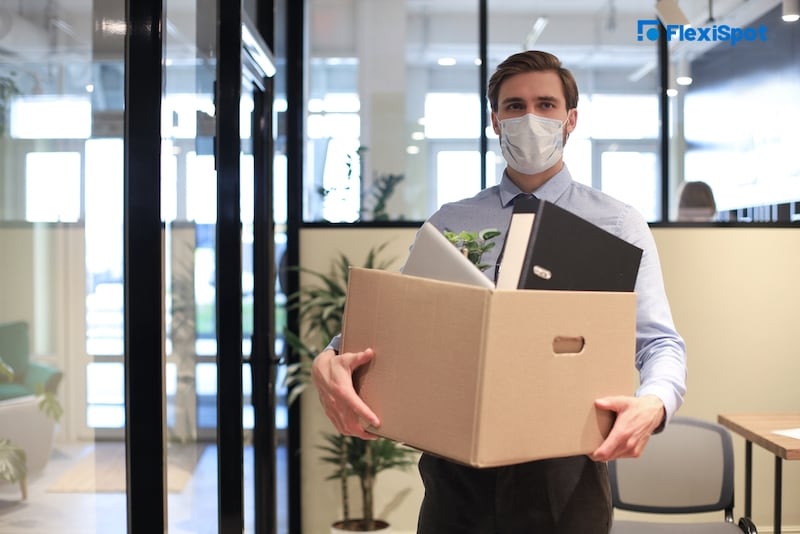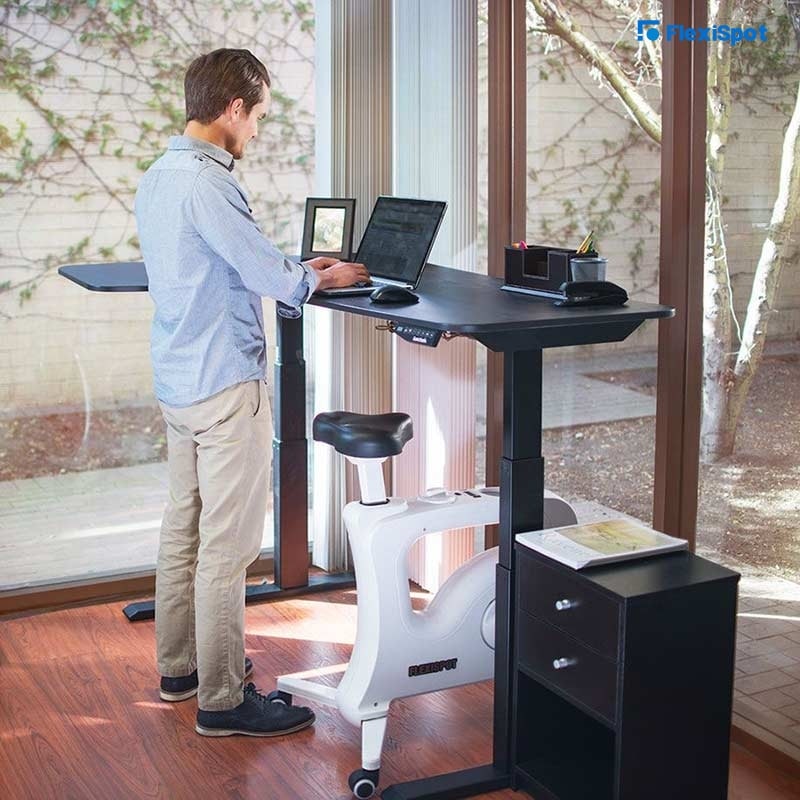A global pandemic reared its head in late 2019, and it wasn’t until 2020 that the world woke up to the magnitude of the coronavirus. For most of 2020, the world was navigating what the new reality meant, and 2021 has been a year of adjusting to the new normal while still battling the Covid-19 pandemic. So many things happened in 2021 that as people prepare to turn over a new year, people have high expectations for the coming year.
By the time 2021 came around, remote working was beginning to take shape. Millions of office workers had traded their daily commutes and office cubicles for at-home offices in the course of the previous year. This being a first for most people, it took quite an adjustment, and what was meant to be a temporary arrangement has now become the default setting for most companies.
Many people have acknowledged that remote working has boosted productivity, and workers found more fulfillment in their work. At the same time, it became clear that striking a work-life balance is an absolute mission. Remote working proved not only possible but also quite effective in some industries. It is expected to continue far into the future and long after the pandemic has ended. With remote working came a lot more freedom for workers to be able to set their schedules, work from the comfort of home and explore their talents. No one missed the daily commute.
The future of work
The new normal has ensured that work will never be the same again. What people believed to be the status working model has now been proved ineffective. Remote working over the course of the pandemic has led to giant leaps in working technology and employee welfare. One of the most significant changes is that meetings are now not just held for the sake of it.
The possible disappearance of office space has been a huge concern for companies. However, it is clear that office spaces will not disappear. These spaces will be available for collaborations from time to time. Most companies are easing into a hybrid system that allows employees to split their time between working from home and at the office.
Even as companies jumped into remote working out of necessity, they quickly realized that conditions are required to sustain this model. The first steps have been taken in remote working, and as this new normal continues to be implemented, workers are showing their hand on this whole issue.
The great resignation
With the work landscape shifting, employee mindsets have also shifted, leading to one of the largest resignation events. Millions of employees quit their jobs in very close succession, making employers express concern about the future of work. On the other hand, employees have expressed their need to work in safe and progressive workspaces, which most companies have not been in the past.
Workers have realized that their work-life has overshadowed everything else in their lives, leaving little or no time for self-care and other personal responsibilities. The pandemic also shocked people into pursuing their passions instead of chasing a paycheck every month. With these shifts, so many employees have downed their tools. Employers are now scrambling to better their workplaces to give employees healthier places to work in.
The worldview of the workplace has changed, and the physical and mental shifts have spelled many new firsts for employees and employers.
Implications of the new normal
For those who had worked remotely before the pandemic, this work model was introduced as a way of striking a balance between work and life. Experienced remote workers revel in the freedom and overall satisfaction in their work and life. Most people didn’t know what they were missing until the pandemic forced people to work from home, and now they know the joys and the downsides of working from home.
Benefits:
Connecting with family – Where most people have mostly traded their families for their work-life, remote working made it possible for people to reconnect with their family members, catch up on what they had missed, and form new bonds. People want to keep these new connections, and that is why they want to fight for a healthy work and life balance.
Exploring and discovering hobbies – the 9 to 5 worker has very little time left over to indulge in their hobbies and discover new ones. However, remote work made it that workers could set their own schedules and have enough time left over to explore their hobbies. Some people have even discovered new interests that they hope to turn into a career path.
Keeping up with personal responsibilities – With work taking center stage for most people, keeping up with their personal chores has been difficult. Remote working made it that people have time to decorate for Halloween, for instance, walk their dogs, tend their house plants, and even get to their spring cleaning lists that they keep putting off.
Focus on health – For most people, life mainly consists of going to work and back home to rest for the night before repeating the process. This made it very hard for workers to notice the health implications of this lifestyle. Now, with the digital transformation and fitness movement underway, people are more aware of the health implications of their daily lifestyles. This has given rise to ergonomics.
Work satisfaction – studies have reported greater work satisfaction now that people are working from home, others working hybrid systems than pre-pandemic.
The rise of ergonomics
As remote and hybrid work systems take root, the conditions for their success must be ensured. Trading out the traditional desk and chair set up for a healthier option is one of the requirements. Until the pandemic, many people didn’t know about ergonomic work equipment. Thanks to companies like Flexispot, this narrative is now changing, and more people are conscious of their health.
Backache, neck pain, poor circulation, and slouching are a few of the issues that workers have struggled with for years on end. Unknown to them, these problems resulted from their working conditions, meaning the desk and chair they use at work. Studies have shown that many workers are at risk of back problems because of their workstations. That is why the adoption of standing desks, standing desk converters, and ergonomic chairs has been a great help for many people.
Flexispot has been at the forefront, ensuring that workers understand the benefits of getting the right work equipment. Since work takes up such a large part of life, it is important to observe health while doing the work. Ergonomic setups also boost productivity and focus.
Standing while working
At first, this was not a very popular idea since people couldn’t conceptualize standing and working. However, standing desks have provided the perfect way to beat the dangerous sedentary lifestyle and adopt a healthy sit-stand workday. Flexispot has debuted many standing desks for various functions, from desks for gamers, office workers, desks that the whole family can use, and even desks for creatives and artists. While standing is a solution to beat the sedentary life, it is important to strike a balance between sitting and standing, which is why Flexispot offers desks with seamless height adjustments.
Lessons from 2021
As we enter into 2022, there are many takeaways from 2021 that workers and employers stand to learn. Chief among them is the value of implementing work cultures and systems that benefit both the employees and the organization.
With technological advances, remote working is possible, but even as it offers convenience, human connection is still meaningful. Therefore, even as people navigate the digital world, they must indulge in human-to-human interactions.
Employers need to support their employees in many ways, whether they are working from home or the office. Mental health issues at work have been rising, and this worrisome trend can be curbed by affording employees the proper support. We have learned that everyone is going through this for the first time in their lives. Therefore, it is okay that people hit bumps along the way.
Flexibility has been lacking in most workplaces, especially as many managers tend to micromanage their teams. Companies need to understand that flexibility regarding work is an excellent perk for employees moving forward. It helps them manage their life and work, and if they can’t do that, cases of disengagement and absenteeism begin to register.
Hybrid systems might become more popular than remote working as people navigate the new normal. Many companies have adopted a hybrid-systems while others have stuck to remote working. These two models balance each other out and offer employees one more choice than they had pre-pandemic.
Health is vital for employees and having the right work equipment in place is essential to ensure workers operate in a safe and healthy environment.
The bottom line
It is all still a learning process as so much is still being discovered. However, it is clear that remote working, hybrid, and ergonomic offices will continue to be topics of discussion for the foreseeable future.






